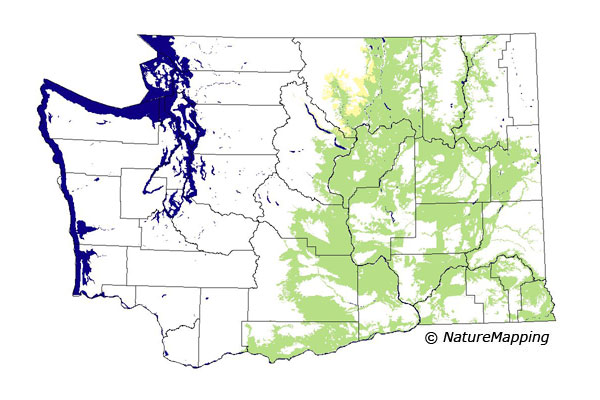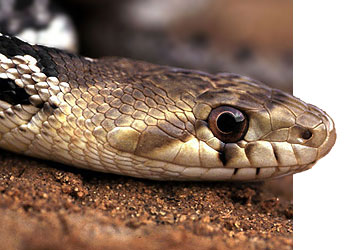


Gopher Snake (Pituophis melanoleucus ) Description: Gopher Snakes are large and heavy-bodied reptiles - reported to reach 9 feet (275 cm) in length, but 4 feet (120 cm) is more common. On its back are 33 to 66 light- to dark-brown or reddish blotches on a ground color of yellow, straw, tan or cream. Smaller blotches are located on the animal’s sides. A dark stripe runs from in front of the eye to the angle of the jaw (see photo below). The underside is creamy or yellow, often with dark spots. The scales on the back are strongly keeled, becoming smoother on the sides. 
Range/ Habitat: The gopher snake is one of the most widespread snakes in North America. Its range extends from the Atlantic to Pacific oceans, as far north as southern Canada, and as far south as Veracruz and southern Sinaloa, Mexico, including Baja California. This species occurs in a lot of different habitats, including prairies, conifer forests and deserts, but it seems most common in semi-arid brushy areas adjacent to farms. Click the map for information about the habitat and range of the Gopher Snake in Washington. Diet: A constrictor, the gopher snake consumes mostly mammals, although birds and eggs are also eaten. Reproduction: The gopher snake breeds from The Gopher Snake life cycle begins in spring, when snakes emerge from their over-wintering hibernacula (dens) to mate. In order to stimulate females to mate, male gopher snakes line their bodies up with the females, and may even bite them on the back of the neck. The pregnant females lay between 2 and 8 eggs in late June or early July. The female must first find a good egg-laying site for the eggs to develop, since she does not actually incubate the eggs. These sites are often shared with other gopher snakes, and even with other species of snakes.
Behavior:
Click here to see a video clip of a Gopher Snake defensive display. (7.6 MB)
Did you know?
More Information: Animal silhouettes available to purchase » Photo Credit: Chris Brown, USGS Home | About Us | How to Participate | Biodiversity Modules | Projects | Maps | News | Resources |